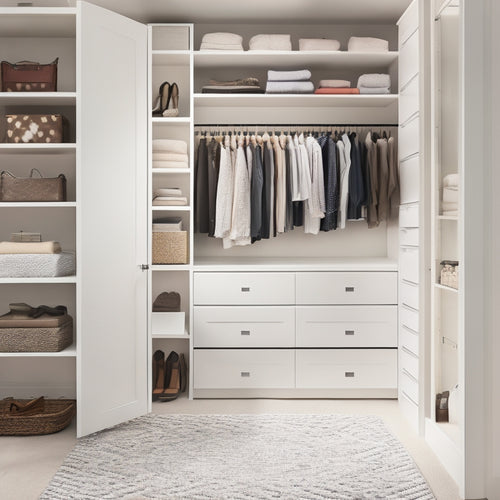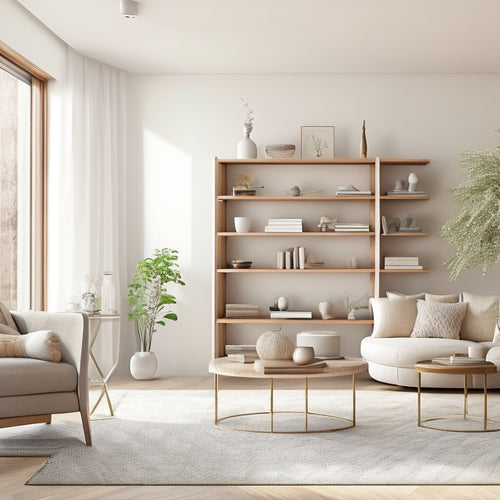
Haudenosaunee Longhouse: Symbol of Unity and Tradition
Share
The Haudenosaunee longhouse, a centuries-old architectural tradition, stands as a powerful symbol of unity and tradition, embodying the collective identity, social organization, and communal values of the Haudenosaunee people. It represents the heart of their society, where extended families lived together under one roof, fostering a sense of belonging and cooperation. The longhouse's design and construction reflect the resourcefulness and adaptability of the Haudenosaunee, honoring ancestral ties and community values. As a tangible expression of unity and traditions, the longhouse continues to play a crucial role in Haudenosaunee culture, and there's more to uncover about its significance in their rich heritage.
Key Takeaways
• Haudenosaunee longhouses symbolized unity and tradition, representing collective identity and social organization within the community.
• The longhouse structure was a tangible expression of unity and traditions, fostering a sense of belonging and cooperation among residents.
• Communal living in longhouses strengthened community bonds and support, reinforcing clan dynamics and social roles.
• The architecture of longhouses reflected resourcefulness and adaptability, using locally available materials to conserve resources and adapt to the environment.
• Longhouses served as a microcosm of Haudenosaunee society, honoring ancestral ties and community values through daily life and communal activities.
History of Haudenosaunee Longhouses
The Haudenosaunee people built longhouses, typically consisting of 20 or more related families, with each clan having its own longhouse, named after animals and birds, and tracing lineage maternally.
These longhouses were constructed using traditional techniques, adapted to the available raw materials and technology of the time. The clan structure played an essential role in the construction and organization of the longhouses, with each clan working together to build and maintain their own longhouse.
The construction techniques used were shaped by the environment and tools available, resulting in unique and functional dwellings. The longhouses not only provided shelter but also reflected the social organization and unity of the Haudenosaunee culture, with each clan's longhouse serving as a symbol of their identity and connection to the community.
Cultural Significance of Longhouses
Beyond providing physical shelter, the Haudenosaunee longhouse embodied the very essence of their society, symbolizing unity, tradition, and collective identity among its inhabitants. The longhouse represented a microcosm of their social organization, with each clan having its own longhouse, named after animals and birds, and tracing lineage maternally. This symbolism extended to the community values, where ancestral ties were paramount.
| Cultural Aspect | Significance |
|---|---|
| Social Organization | Represented unity among clans |
| Symbolism | Embodied collective identity |
| Community Values | Honored ancestral ties |
The longhouse was more than just a dwelling; it was a tribute to the Haudenosaunee Confederacy's strength and resilience. The five nations that formed the original Confederacy held specific roles, and the longhouse stood as a symbol of their unity and traditions. Even today, the modern Haudenosaunee continue to value the Longhouse as a powerful symbol of their heritage.
Family Units and Communal Living
In addition to symbolizing unity and tradition, Haudenosaunee longhouses also facilitated communal living, where extended families comprising multiple generations and relatives resided together under one roof. This shared living arrangement strengthened community bonds, as clan members relied on each other for daily needs and support.
The longhouse was more than just a dwelling; it was the heart of clan dynamics, where family ties were nurtured and social roles were defined. Within the longhouse, extended families worked together, shared resources, and made collective decisions, reinforcing the importance of communal living and cooperation.
This unique social structure allowed the Haudenosaunee to thrive, fostering a strong sense of community and social harmony.
Architectural Features of Longhouses
Characterized by their long, narrow, rectangular shape, traditional Haudenosaunee longhouses were constructed using locally available materials and techniques, reflecting the resourcefulness and adaptability of the community.
This traditional construction approach allowed the Haudenosaunee to thrive in their environment, demonstrating their ability to adapt to their surroundings.
The longhouses were built using materials such as wood, bark, and thatch, which were readily available in their region. This environmental adaptation enabled the community to conserve resources and minimize their impact on the environment.
The architectural features of the longhouses also reflected the social organization of the Haudenosaunee, with each clan having its own longhouse that symbolized their unity and traditions.
Unity and Tradition in Practice
The Haudenosaunee Confederacy's unity and traditions were tangibly expressed through the longhouse, where daily life and communal activities reinforced the clan's social bonds and cultural heritage. This communal living arrangement fostered a sense of belonging and cooperation among clan members.
| Community Events | Cultural Ceremonies |
|---|---|
| Harvest festivals | Midwinter ceremonies |
| Clan gatherings | Strawberry ceremonies |
| Social dances | Green Corn ceremonies |
| Storytelling sessions | Thanksgiving ceremonies |
In this setting, community events and cultural ceremonies were an integral part of daily life, strengthening the clan's unity and tradition. The longhouse became a symbol of the Haudenosaunee Confederacy's values, where collective identity and shared experiences were woven into the fabric of daily life.
Frequently Asked Questions
What Was the Average Size of a Haudenosaunee Longhouse?
Imagine a sprawling village within a single structure! On average, a Haudenosaunee longhouse measured 150-200 feet long, accommodating 20 or more families, showcasing architectural significance, cultural heritage, and facilitating community gatherings in its unique living arrangements.
How Did the Haudenosaunee People Light Their Longhouses?
They lit their longhouses using traditional methods, such as fire pits, which not only provided warmth but also facilitated cultural significance, serving as gathering spaces for community gatherings, fostering social bonding and communal living.
Were Longhouses Used for Ceremonial Purposes?
They used longhouses for ceremonial gatherings, hosting spiritual practices like rituals, ceremonies, and meetings, which fostered community bonding, reinforced cultural identity, and honored ancestral traditions, reflecting the significance of communal living and shared heritage.
How Did the Haudenosaunee People Heat Their Longhouses During Winter?
They employed sustainable heating methods, such as central fires and insulated walls, to maintain winter warmth in their longhouses, reflecting their cultural practices that prioritized community and environmental harmony.
Did the Haudenosaunee People Have Private Spaces Within the Longhouse?
In this communal utopia, where sharing is caring, they didn't quite grasp the concept of "private spaces." Instead, they prioritized community gatherings, with everyone living together in harmony, minus the luxury of personal nooks.
Related Posts
-

Designing Custom Shelving for Closet Organization Success
When designing custom shelving for closet organization success, you'll need to assess your closet's unique dimensions...
-

Effortless Kitchen Gadget Storage Solutions
You're about to convert your kitchen into a haven of organization and efficiency with effortless gadget storage solut...
-

7 Best Corner Shelving Units for Home
You're looking to optimize your home's corner spaces with stylish and functional shelving units. Corner shelves are a...


